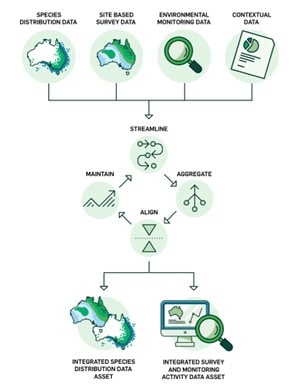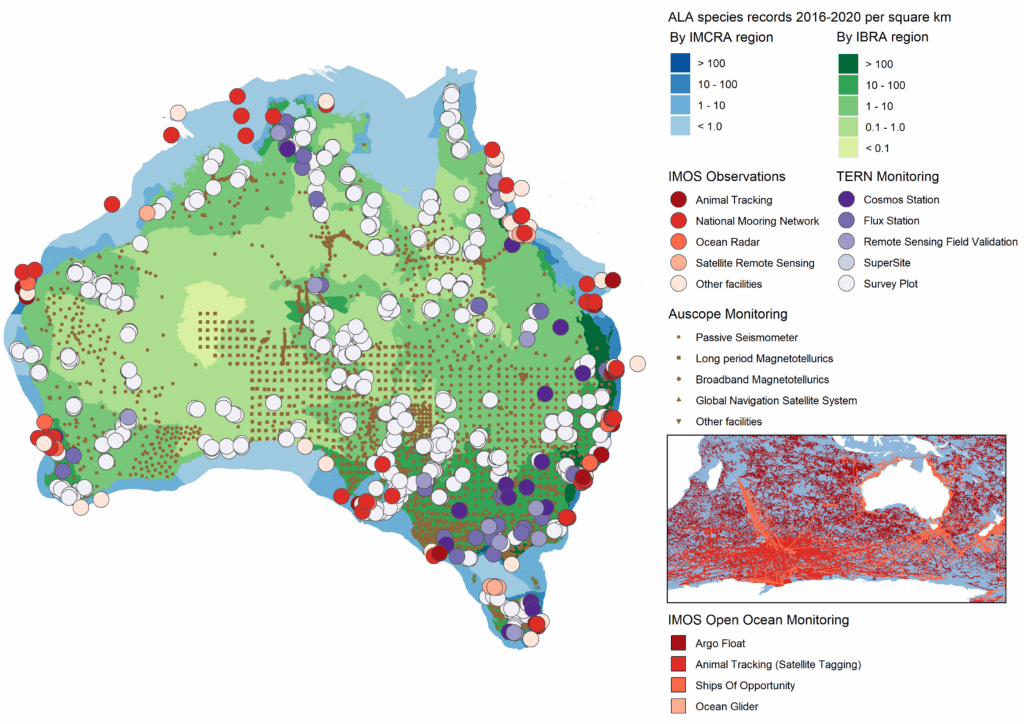In collaboration with our partners ALA and IMOS, we invite you to explore our new shared data platform, EcoAssets.
In November 2021, we reported on a new project in which TERN, Atlas of Living Australia (ALA) and the Integrated Marine Observing System (IMOS), three NCRIS-funded Australian national research infrastructure projects that hold environmental data, along with NCRIS-enabled Australian Research Data Commons (ARDC) and the Australian Government, were working together to streamline access to integrated data for State of the Environment reporting and other environmental assessments.


The project is called ‘EcoAssets’ and the collaboration is allowing streamlining of access to environmental data from the holdings of TERN, ALA and IMOS into one location, providing integrated data assets to support environmental reporting and assessment needs, such as the recently released 2021 State of the Environment (SoE) report. Although the SoE report was released in late July 2022 and our collaborative project is still young, a search of the word “EcoAssets” in the SoE report returns a healthy 16 occurrences of information gained from the new platform.

Seven datasets are now publicly and freely available and further data sets will be released through 2022.
The first biodiversity data asset published under the EcoAssets project is Aggregated Data: Australian Species Occurrences, which enables users to explore the data by threatened species status, bioregion, protected area category, and more. That is, it includes all data required for exploration of species occurrence data by EPBC status, GRIIS status, bioregion, CAPAD protected area category and Forests of Australia status. This provides coverage for Australian terrestrial and marine systems. A future release will include an environmental monitoring and observation summary dataset.
The six further derived data assets also available for terrestrial and marine regions of Australia are:
- Summary Data: Threatened Species Occurrences by Terrestrial Ecoregion
- Summary Data: Threatened Species Occurrences by Marine Ecoregion
- Summary Data: Introduced Species Occurrences by Terrestrial Ecoregion
- Summary Data: Introduced Species Occurrences by Marine Ecoregion
- Summary Data: Protection Status for Australian Terrestrial Species Occurrences
- Summary Data: Protection Status for Australian Marine Species Occurrences
By increasing alignment between data, the research infrastructures have created not only the seven first release datasets, but also data pipelines to ensure each data asset can be updated at regular intervals – speeding up reporting and assessment efforts in the future.








